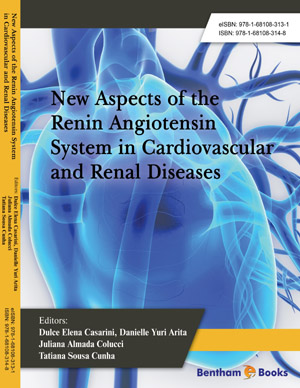Abstract
Local angiotensin generation depends on the uptake of circulating renin and/or its precursor prorenin. Such uptake may involve binding to a receptor. In the past 3 decades, three potential receptor candidates have been evaluated: a renin-binding protein, the mannose 6-phosphate/insulin-like growth factor II receptor, and the (pro)renin receptor. The most promising candidate seemed to be the (pro)renin receptor; however its affinity for renin and prorenin is several orders of magnitude above their actual levels in blood, raising doubt on whether this interaction truly occurs in vivo. In addition, conflicting in-vivo data have been reported regarding the putative (pro)renin receptor blocker, handle region peptide, while (pro)renin receptor knockout studies revealed lethal consequences that are (pro)renin-independent. The latter is most likely due to the fact that the (pro)renin receptor colocalizes with vacuolar H+-ATPase, and possibly determines the stability of this vital enzyme. This chapter briefly discusses the various receptors, and ends with the conclusion that (pro)renin-(pro)renin receptor interaction, if it occurs in vivo, is limited to (pro)renin-synthesizing organs like the kidney.
Keywords: Angiotensin, Cyclo-oxygenase-2, ATP6AP2, Extracellular signalregulated kinase, Glomerulosclerosis, Handle region peptide, Kidney, Mannose 6- phosphate/insulin-like growth factor II, Plasminogen-activator inhibitor-1, Prorenin, (Pro)renin receptor, Renin, Renin-binding protein, Transforming growth factor ß1, Vacuolar H+-ATPase, Wnt signaling.






















